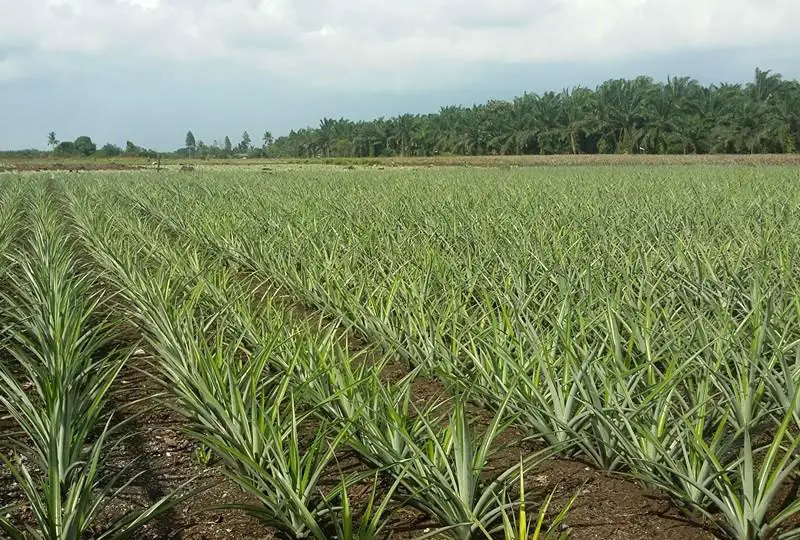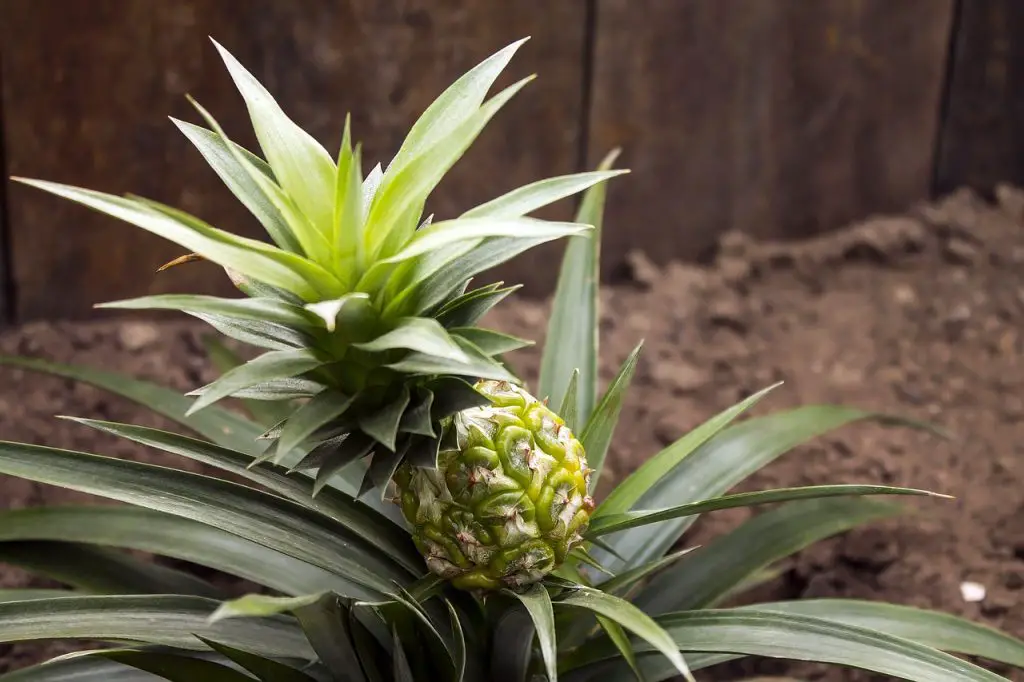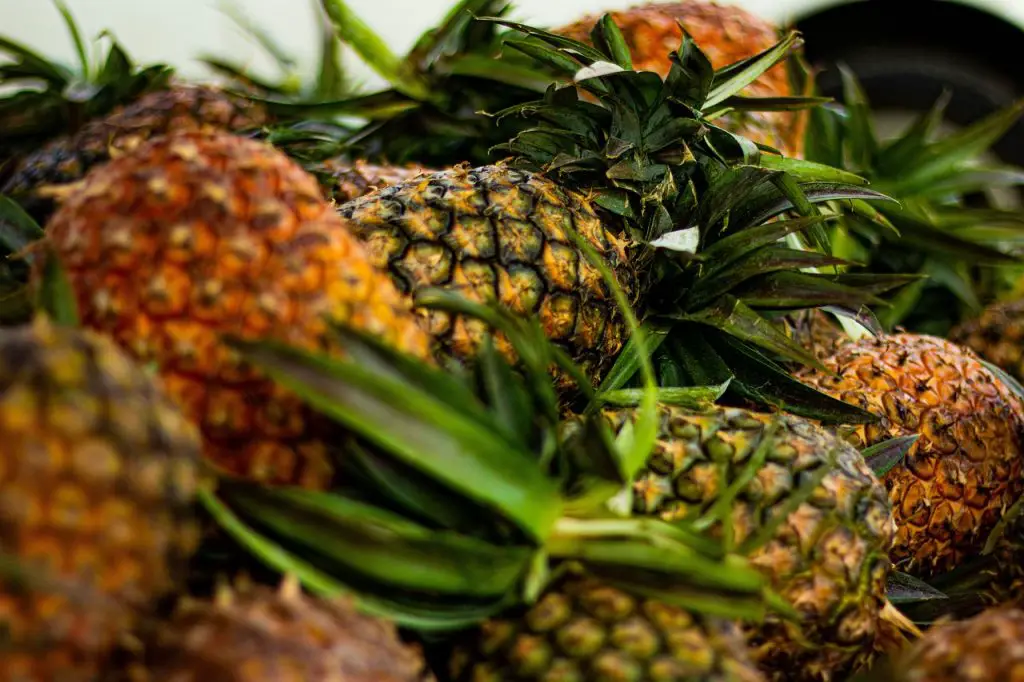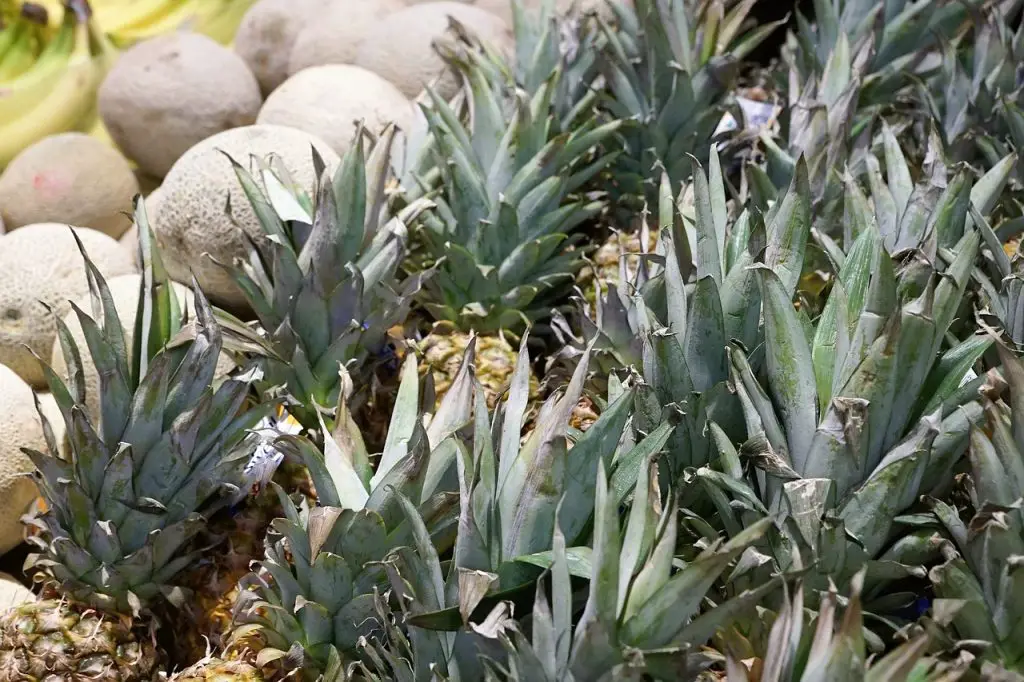Do you want to know how long a pineapple takes to grow? Growing pineapples can be gratifying and difficult at the same time. But with a few straightforward methods, you can have great success to grow them in your garden.
Pineapple requires time to ripen. So, patience is the first thing that you need to have for successful pineapple cultivation. From planting to harvest, it normally takes 12 to 20 months on average. Even while it might seem like a long time, it will all be worth it when you see those lovely golden fruits dangling off the tops of the bushes in your yard!
Of course, a wide range of factors, such as soil quality or climatic change, might have an impact on the growth process. Yet, with careful observation and some TLC along the way, you’ll quickly learn the expertise required to become confident in your ability to recognize when your pineapple crop is ready for picking.
Pineapple Appearance And Attributes
The amazing tropical fruit known as the pineapple is not only beautiful but also delicious. It features thick, leathery skin that is yellow in color with a spikey, green crown. The pineapple’s flesh is a delicious golden-yellow color, sweet in flavor, and has a great scent. White fibers and little edible seeds surround the pineapple’s center, which can be consumed either raw or cooked. To maximize light exposure for photosynthesis, pineapple plants develop long, sword-shaped leaves that stand upright from their stems.
The plant’s stems expand both horizontally and vertically, enabling it to swiftly cover enormous regions. When fully grown, they can grow up to five feet tall and often form clusters at ground level with several fruits per plant. Despite their size and weight, pineapples don’t need much support since their large root system keeps them firmly planted. With all of these qualities, one might question how long it takes for a pineapple to grow.
What Are The Pineapple Growing Stages?
The pineapple growing stages can be broken down into four distinct phases which are the germination phase, vegetative phase, fruiting phase, and harvesting phase.
1. Germination Phase
The first growing stage for pineapple is the germination phase, which starts when a seedling emerges from the soil and continues until the seedling has developed its first true leaves. During this time, the seed will need to be kept warm and moist so that it can reach full development.
2. Vegetative Phase
The vegetative phase of pineapple growth is the longest and most important stage. It typically takes 12 to 24 months for a pineapple plant to reach its full maturity, depending on variety and climate conditions. During this time, the plants will undergo several changes as they grow larger and more robust.
In the first few weeks after planting, small roots begin to form at the base of the mother plant’s stem. These rootlets are essential for providing nutrients to the developing fruit. As the plant matures, the foliage develops throughout its crown with broad, glossy leaves that can be up to two feet in length. New shoots also emerge from side branches called ‘suckers’, which should be removed if you’re looking for a higher yield of mature pineapples per harvest.
At this stage, it’s important for gardeners or farmers to provide adequate water and fertilizer to their pineapple plants. If done correctly, these practices will help promote healthy foliage growth while ensuring each individual stalk has enough energy stored up for fruiting later on down the line.
3. Fruiting Phase
After the long and arduous vegetative phase of pineapple growth, it is now time for the next exciting step: fruiting! This stage marks a major milestone in your pineapple’s life journey. It is often a period filled with anticipation as you wait to see if all your hard work will pay off in the form of sweet and juicy fruit.
The fruiting phase typically begins anywhere from eight months to two years after planting, depending on the variety and growing conditions. During this period, the plant’s energy is focused solely on producing fruit. As such, many growers choose not to fertilize during this time so that all available resources are devoted to setting blooms and developing pineapples.
While some varieties may begin flowering within just weeks or even days of entering this stage, most take several months before they’re ready to be harvested. To ensure optimal flavor and texture, many growers recommend waiting until the pineapple turns yellow before harvesting it—but don’t worry too much about overripe fruits; once picked, mature pineapples only continue ripening very slowly at room temperature.
4. Harvesting Phase
Once the pineapple has grown and matured, it’s time to harvest. The best way to tell if a fruit is ripe is by its color: yellow-gold indicates that the pineapple is ready for picking. After harvesting, pineapples should be stored at room temperature until they’re eaten or processed. Pineapple farmers must take care when removing fruits from the plant so as not to damage other nearby plants or injure themselves.
In terms of post-harvest handling, certain precautions and treatments can extend the shelf life of an individual pineapple and preserve its quality over time. For example, most growers will use waxing solutions to coat their pineapples in order to protect them from external contamination during transport and storage. Additionally, ethylene gas treatment may also be used on harvested fruits; this helps accelerate ripening while retaining firmness and flavor within the fleshy part of the fruit.
Proper post-harvest management strategies are essential in ensuring that consumers receive safe and high-quality products after purchase. With careful consideration and attention given to each step of growing and harvesting pineapples, these sweet tropical fruits can bring joy into people’s lives for years to come!
How Do You Make Pineapple Grow Faster?
It’s no secret that pineapples take a while to grow, but there are ways to speed up the process.
First thing first, you need to provide ample sunlight and warmth for your pineapple plant. Pineapple plants need lots of sun and warmth in order to thrive, so make sure your plant gets at least 6 hours of direct sunlight per day. Additionally, it’s important to ensure that the temperature doesn’t drop below 15°C as lower temperatures can stunt growth or even kill the plant. If possible, try keeping your pineapple warm with a greenhouse or other means of temperature control during colder months.
Ensure there is adequate nutrition for the plant. A healthy pineapple needs plenty of nutrients like nitrogen, phosphorus, potassium, and magnesium (NPKM). You can mix NPKM into the soil before planting or add fertilizer throughout its development; however, be careful not to overfertilize as this could damage the roots and reduce fruit production. Lastly, adding organic matter such as compost or manure will help provide essential micro-nutrients like iron and zinc which are key components in helping the pineapple reach maturity faster.
Proper watering habits are also vital when trying to increase the pineapple growth rate. Watering should be done regularly – about once every week – but only enough so that the soil stays moist without becoming waterlogged as too much moisture can lead to root rot and poor fruit production. Furthermore, if growing indoors use lukewarm water rather than cold water from outside sources as sudden temperature changes can shock the roots leading them unable to absorb moisture properly.
Growing Pineapples From Tops And Cuttings
Growing pineapples from tops and cuttings is an interesting way to get your own pineapple plants. To grow a new plant, you’ll need the top of an existing one – just snip it off with scissors or a sharp knife. You can also use stem cuttings if they are around 4-6 inches long.
Once you have your cutting, place it in water for 1-2 days so that it forms roots. Then pot up the cutting in soil and keep warm and moist at all times. The best temperatures are between 65°F (18°C) and 85°F (29°C). It will take 3-4 weeks before you see any signs of growth.
Pineapple plants prefer full sun but can tolerate partial shade as well. Fertilize once every two months during the growing season with a balanced fertilizer diluted by half its recommended strength. With good care, it should take about 18 months until the first fruits appear on your newly grown pineapple plant!
Tips To Care For Pineapples To Grow Faster
Just one bite of fresh pineapple will convince you of this tropical fruit’s widespread adoration. Planting and caring for your own pineapple crop may be a fun and demanding hobby. If you want your plants to stay healthy and expand rapidly, follow these guidelines:
You should water your pineapple plant once or twice a week, depending on the weather in your area, being sure to give it plenty of water but not drowning it. If you dig down an inch and find dry dirt, it needs watering.
Fertilize properly: pineapples thrive on nitrogen, so use a high-nitrogen fertilizer to give your plants the boost they need to flourish. So don’t go crazy with it! The roots of plants are sensitive and can easily be damaged by using too much fertilizer.
Maintaining healthy, happy pineapple plants requires good air circulation to discourage the spread of disease. Provide enough room around each plant for air to circulate freely.
If you follow these directions, you’ll soon be enjoying fresh, home-grown pineapples. You may have your own piece of tropical paradise with a little bit of work and care.
How Often Do Pineapple Plants Produce Fruit?
As the previous section explained, with proper care and maintenance, pineapple plants can grow faster. Now the question arises – how often do these plants produce fruit? The answer to this question largely depends on several factors such as climate, soil type, fertilization methods, etc.
The fruiting season of a pineapple plant usually starts in spring and ends by mid-summer or autumn depending upon the climatic conditions. In general, it takes about 18-24 months for a pineapple plant to bear its first fruits after planting. However, if all the necessary growing requirements are met properly, then some varieties may even start bearing fruits within 12 months of the plantation.
In addition to that seasonal variation also affects when pineapple flowers bloom and eventually when they turn into ripe fruits. This is mainly because pineapples take a longer time to mature than other tropical fruits like apples or oranges; therefore their flowering period lasts much longer too. On average a single pineapple flower stays open for almost 7 days before producing any fruit. After the blooming process completes successfully; one pineapple plant can yield up to 200 small fruits during each fruiting season!
Therefore from the above explanation, we can conclude that given proper care and cultivation practices; one pineapple plant can bear fruits at least once per year with an average production rate of 200-300 individual pieces per harvest season provided favorable weather conditions prevail throughout the growth cycle.
Do Pineapple Plants Die After Fruiting?
Pineapples are a unique species of plants in that they do not die after fruiting. After the pineapple has been harvested, the crown and base can be used to propagate new pineapple plants. The old plant will continue to produce suckers or lateral shoots which have their own root systems. These lateral shoots create an underground network connected by rhizomes while providing nutrition for the mother plant. With this network, it is possible for the pineapple plant to live indefinitely with proper care and maintenance.
Do Pineapples Need To Be Replanted Every Year?
Pineapples are evergreen perennial that grows in tropical and subtropical climates. A pineapple plant can produce fruit for several years without needing to be replanted, typically lasting around three or four years. After this time period, the plant will start to decline in productivity and a new plant should be started.
The process of growing a pineapple from seed takes two to three years before it is ready to bear fruit. During this period, the plants need plenty of sunlight, warmth, water, and fertilizer to become established. When planting a new pineapple crop, gardeners should select healthy-looking specimens with bright green leaves and no visible signs of disease or pests. New plants should then be placed in well-drained soil enriched with compost or aged manure. Pineapple plants require regular watering during dry spells but do not tolerate standing water as root rot may result.
When selecting pineapple varieties for home gardens, it’s important to consider both flavor and maturity rate as some cultivars take up to 18 months before they are ready for harvest while others have shorter maturation times of 8–10 months. With proper care and maintenance, however, pineapples can be grown successfully at home meaning you won’t have to wait too long until those sweet exotic fruits are ripe enough for your enjoyment!




